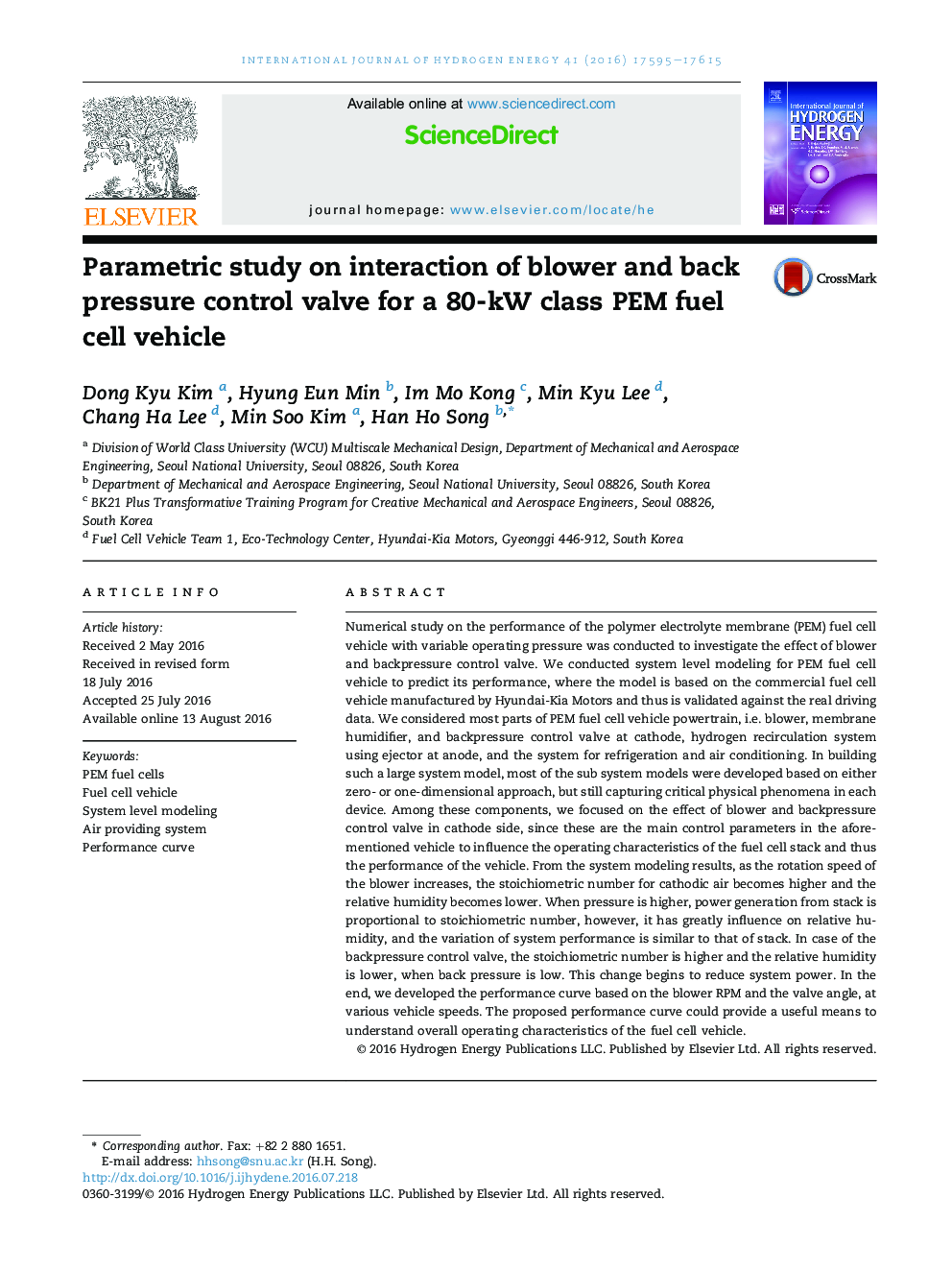| Article ID | Journal | Published Year | Pages | File Type |
|---|---|---|---|---|
| 5148243 | International Journal of Hydrogen Energy | 2016 | 21 Pages |
Abstract
Numerical study on the performance of the polymer electrolyte membrane (PEM) fuel cell vehicle with variable operating pressure was conducted to investigate the effect of blower and backpressure control valve. We conducted system level modeling for PEM fuel cell vehicle to predict its performance, where the model is based on the commercial fuel cell vehicle manufactured by Hyundai-Kia Motors and thus is validated against the real driving data. We considered most parts of PEM fuel cell vehicle powertrain, i.e. blower, membrane humidifier, and backpressure control valve at cathode, hydrogen recirculation system using ejector at anode, and the system for refrigeration and air conditioning. In building such a large system model, most of the sub system models were developed based on either zero- or one-dimensional approach, but still capturing critical physical phenomena in each device. Among these components, we focused on the effect of blower and backpressure control valve in cathode side, since these are the main control parameters in the aforementioned vehicle to influence the operating characteristics of the fuel cell stack and thus the performance of the vehicle. From the system modeling results, as the rotation speed of the blower increases, the stoichiometric number for cathodic air becomes higher and the relative humidity becomes lower. When pressure is higher, power generation from stack is proportional to stoichiometric number, however, it has greatly influence on relative humidity, and the variation of system performance is similar to that of stack. In case of the backpressure control valve, the stoichiometric number is higher and the relative humidity is lower, when back pressure is low. This change begins to reduce system power. In the end, we developed the performance curve based on the blower RPM and the valve angle, at various vehicle speeds. The proposed performance curve could provide a useful means to understand overall operating characteristics of the fuel cell vehicle.
Related Topics
Physical Sciences and Engineering
Chemistry
Electrochemistry
Authors
Dong Kyu Kim, Hyung Eun Min, Im Mo Kong, Min Kyu Lee, Chang Ha Lee, Min Soo Kim, Han Ho Song,
